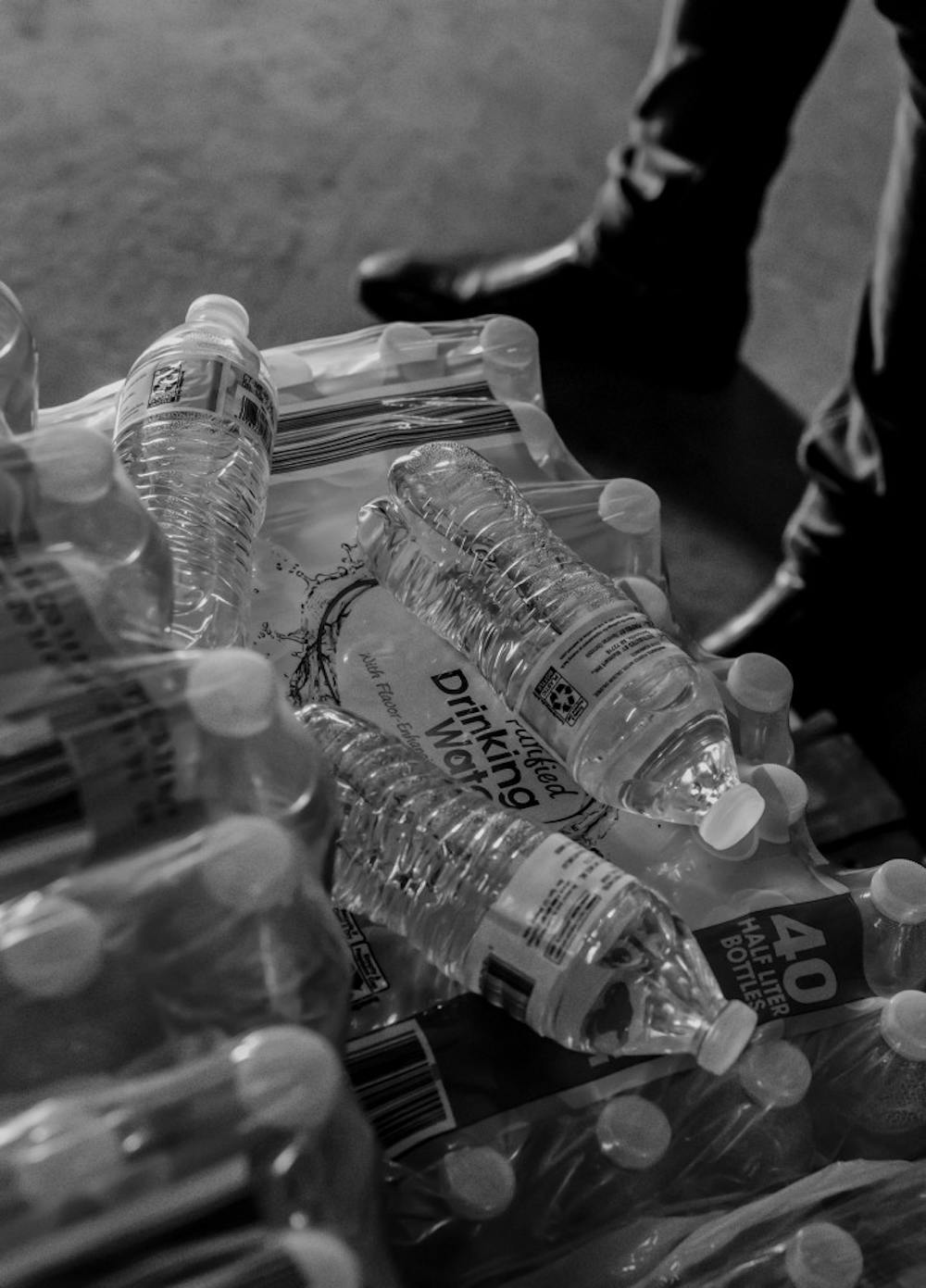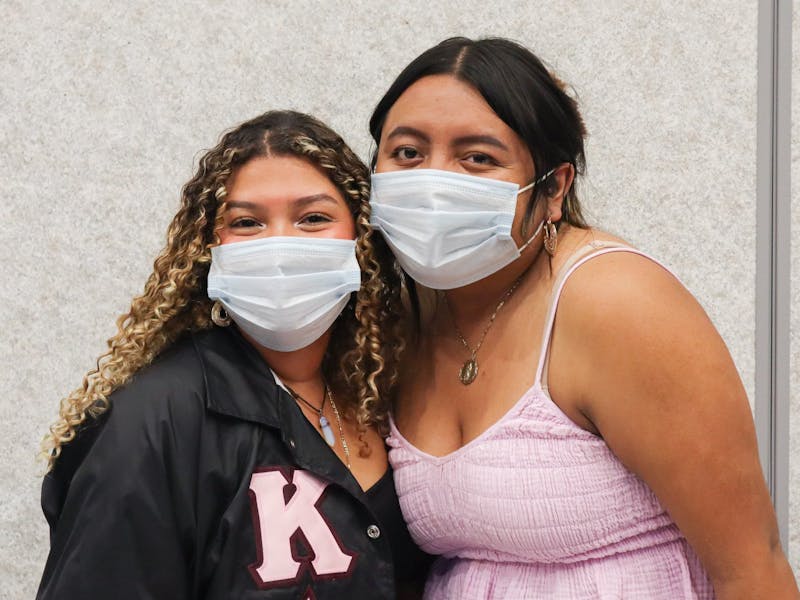Photo by Nancy Sterrett
Drive down Blossom Street, towards Cayce, across the Congaree, out toward Lizard’s Thicket
and then Krispy Kreme. Keep driving toward the exit for Charleston, and then keep driving, faster, then slower, then faster again as the speed limit ebbs and flows. Keep driving until almost all motorists have fallen back to drive roads more often traveled.
Between Norway and Govan, an hour down the road, the two-lane highway swells—swirling
green, yellow, white dogwood flowers centerpiece the road. Along the sidewalk, there’s an Art
Deco theater blocked off by caution tape, an imposing brick building painted ANTIQUES, and
several darkened businesses with signs advertising long-closed establishments.
This is Denmark, South Carolina. To the uninitiated viewer, Denmark might look like another
blink-and-you’ll-miss-it town. But if you haven’t heard of this Lowcountry town, you haven’t
been paying attention.
The bottom line is this: for over ten years, a chemical called HaloSan, which was not approved for use in drinking water by the EPA, was injected directly into the Cox Mill Well, one of four wells serving Denmark residents. Residents report murky water with metallic residue sinking to the bottom coming out of their taps. Some credit kidney or digestive problems to the water.
Denmark is experiencing a true water crisis—and their local and state leaders can’t (or won’t)
address the problem.
We pulled into Deanna Miller-Berry’s driveway around lunchtime. Ms. Miller-Berry graciously
offered to make time to speak with me, but when I arrived, I realized the nature of her prior
engagement—her house was buzzing, filled with residents, activists, filmmakers and the
uniquely Southern smell of crab legs and shrimp boil. Everyone was there helping film a
campaign segment for a presidential contender.
Among the crowd were Paula Brown and Eugene Smith, referred to as “Mom and Pop” by members of Denmark Citizens for Safe Water (DCFSW). They appeared in a Bernie Sanders campaign video and have been collecting, dating, and documenting the water in their home for over ten years.
“That’s how I became involved in the water crisis,” Miller-Berry said, “I was in a community
meeting, talking with people, listening to concerns, and this couple came up to me and placed these thick binders down in front of me and asked, ‘What are you going to do about this?’”
Deanna Miller-Berry, as it turns out, wastes no time wondering about what to do. She grew up in Ridgeville, SC, but she and her husband have lived in Denmark for 6 years, making this their home. Her personality is magnetic and magnanimous — in her first years in the town, she started the Saving Shannie Foundation, the local branch of Toys for Tots, and ran a late-game, write-in mayoral campaign, breaking a record among Black women for receiving the highest number of write-in votes. She serves as one of the administrators for DCFSW, a local activist and advocacy group with one sounding cry— “WE DESERVE SAFE QUALITY DRINKING WATER!”
“People are having to haul water twenty miles round trip and pay $200-$300 on bills for water
they can’t use,” she said. Often, when water comes out of the taps murky, the city’s advice is to “run the water” until it clears. This, as well as leaks and structural faults, lead to inflated water bills on a commodity that many citizens feel unsafe using for anything but flushing.
Although Denmark citizens have been complaining about the water quality for years, Mayor
Wright has insisted that the water is safe to drink, both before and after the discovery of
HaloSan. When Miller-Berry approached him with photocopies of Brown and Smith’s binders
back in 2016, Mayor Wright said to her, paraphrased: There is no water crisis... the people are
crazy, they don’t know what they’re talking about, they’re not educated.
“People in this community weren’t hopeless; they just lost hope in being heard,” Miller-Berry
said. “The more I talked to people, the more they told me their stories on how they did speak up [about their water quality] but were not heard.”
Consequentially, Miller-Berry’s specialty is getting the word out. In January, DCFSW held a rally and a march downtown. Attendees included activists from Flint, Michigan, toxicologists, local supporters, and researchers, including Dr. Sue Richardson, the UofSC researcher responsible for the discovery of HaloSan. Miller-Berry has been instrumental in accruing both political support for Denmark’s crisis (Sanders was the first, but Booker, Warren, Williamson, Harris, Yang, and more have all reached out, and some have visited) and scientific evidence.
“Science will set you free. Policy is made by man, but you cannot alter science,” she said.
Dr. Marc Edwards, researcher at Virginia Tech most renowned for publishing the data proving
the severity and urgency of the Flint water crisis, has visited Denmark often. On multiple
occasions, he has offered to test the wells and taps in citizens’ homes at no cost to the city, but Mayor Wright has refused his proposal, opting instead to cooperate with USC researchers.
“As it turns out, UofSC were our heroes,” Miller-Berry said. “They’re the ones who found the
HaloSan.” The HaloSan was unprecedented. HaloSan is a chemical (scientific name,
bromochlorodimethylhydantoin, or BCDMH) that kills bacteria and other dangerous biomatter in raw water. Never before had it been used to disinfect drinking water. In fact, Denmark, SC is the only well system in the world that used HaloSan for this purpose. And the city of Denmark did not keep strict records of how many times or in what amounts it was being used.
“I happened to notice when we were testing at the Cox Mill Well, there was this bucket of the
BCDMH — I happen to know that one because I once did a study on swimming pools and hot
tubs — and I thought, What is that doing here?” After Dr. Richardson voiced her concerns to DHEC, she contacted the EPA, who confirmed that HaloSan had never been approved to treat well water.
“It’s fine to have that in your swimming pool, but it may not be fine to have it in the water you drink,” Dr. Richardson said. “When this molecule disseminates into a pool, there are huge charted spikes of leftover bromines and chlorines—and this was being injected into the
groundwater, so it was going to stay around.”
“I think Denmark was desperate to find something to kill the iron bacteria in the raw water,” she continued, “Systems that serve less than 10,000 people are the most frequent violators of the EPA regulations. They just don’t have the resources to monitor or invest in innovative systems.”
The UofSC research team tested for lead, iron, manganese, and other metals at the request of DHEC. In their published report, they found no contaminant levels in any well that exceeded the EPA recommendations. But the levels, especially of iron and manganese, were not zero; in the DHEC report, the iron levels in two wells (Acacia and W. Voorhees) ranged from .015 to .2 milligrams per Liter and the manganese levels were between .01 and .03. That doesn’t sound like a lot, but the EPA guidelines for drinking water for iron caps at .3 mg/L and .05 mg/L for manganese. Not only do these metals cause the discoloration, but depending on the testing date and time, the levels could be higher, both in the groundwater and in individual pipes and homes.
The Cox Mill Well has been taken out of service. But no real answers have been delivered to the citizens of Denmark, many of whom feel that the city and state have simply swept their history of negligence under the rug without apology. Before the HaloSan was discovered, DHEC and the city of Denmark claimed the water was safe for drinking, bathing, and cooking; now, after stopping the use of this chemical, their claim hasn’t changed. Who can blame the residents for their distrust?
From Dr. Richardson— “If that was coming out of my tap, I’d be drinking bottled water too.”
As the film crew angles a shot of the opening warehouse door, a beat-up Ram 1500 moseys
along the side road. The driver sticks his neck out to ask whether there’s a distribution happening today, but Remela Duncan, another board member for DCFSW, waves him off. “We’re filming today,” she says, shooing his truck down the empty street.
She tells me that on distribution days, they serve over 600 families with pallets of bottled water donated by businesses, organizations, and individuals. They also distribute to three local facilities for the elderly, the local schools, and two local colleges, Denmark Tech and Voorhees College, both HBCUs.
Naviree Johnson, a graduate of Denmark Technical College and a lifelong resident, says the local colleges and school districts don’t take any chances. “No one drinks the water, really,” he said. To some students in Columbia, this reality might be commonplace—but to others, it’s unfathomable. Denmark is certainly not the only water system in the state to need a full overhaul.
Slowly, the issue is gaining national traction, but currently, reform from the state and city
offices are what the citizens sorely need. If you feel, rightly, that UofSC students, as residents of the state of South Carolina, cannot and should not let fellow South Carolinians suffer from infrastructural violence, Deanna Miller-Berry had some advice: “Volunteer. Help make phone calls. Research. Rally. I won’t say donations because I was a college student too. If we sound the alarm loud enough, get the word out nationally, we can make a movement.”
The people of Denmark are not uneducated, nor are they complacent in the face of injustice.
Meeting members of DCFSW floored me—this, truly, was a community that cared about each
other, that mobilized with a purpose and a clear mission, that wouldn’t stop until Denmark
citizens feel safe using the water running to their homes.
Next time you drive to Charleston, Hilton Head, or Charlotte, take my advice: take a back road.
Stop at a local meat-and-three; try to resist Chick-fil-a. See for yourself the other side of South
Carolina’s “smiling faces and beautiful places” that the interstate bypasses. Communities like
Denmark make up much of the state—and what we do there, in the smallest towns, makes us, for better or worse, who we are.


